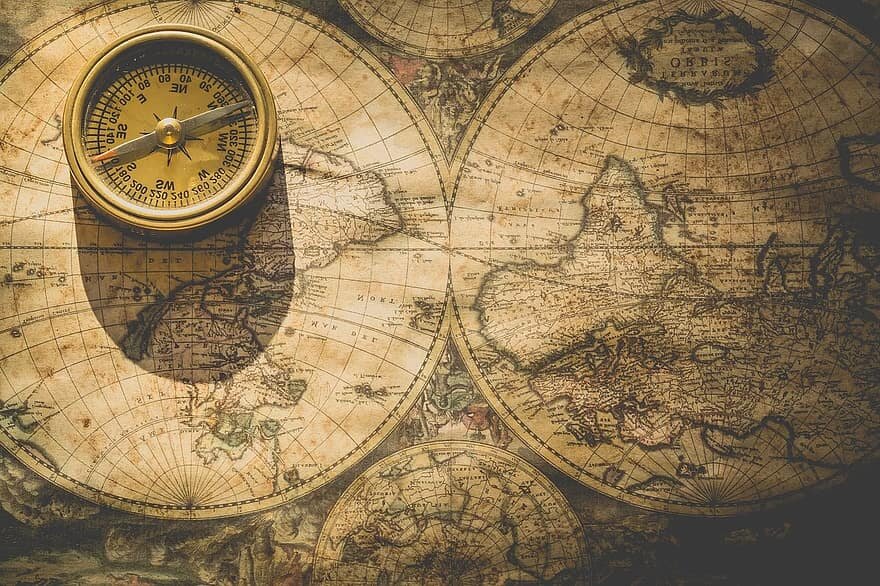Do you remember life before GPS? I do.
Unfolding (and ripping) the huge paper map, turning it upside down to reorient myself, hesitantly saying, “I think you’ll need to turn here. No wait. . . . go back . . . “ Rustle more with the map. Hear tension in Bill’s voice, “Dear, are you looking in the right place?”
Thank God for technology.
My first GPS would say “recalibrating” when I took a wrong turn and reroute me. That’s what I want spiritually—to quickly find out when I’m lost and reorient.
One of the truths which struck me as I have spent time in John 13-17, Jesus’ farewell address to his disciples, is how oriented Jesus was and how disoriented his disciples were. Jesus knew who he was, what he’d been given, where he came from, and where he was going and that his time had come. He wanted to implant that kind of spiritual life map into his followers by sending them the Holy Spirit to help them find their way home. A home in which he was preparing a room for them (John 14).
Because I can get spiritually lost and forgetful more often than most, I want to tune in more and more to my implanted GPS (God’s Prevailing Spirit). But I also love a good old paper map— a spiritual life map—a recalibrating practice that helps me remember who I am and where I’m going. I pray this exercise helps you in your spiritual journey.
Spiritual Life Map
A spiritual life map gives you a visual reminder of who and where you are, where you’re going, and how to keep re-finding your way home. This recalibrating tool shows where you’ve seen God move through the events in your life and keeps your eyes focused on the the perfect ending even if your current path is dark.
Create this map in a way best suited to your personality or wiring. Engineers and number folks may track their journeys through graphing or a chronology line (as long as they’re comfortable with non-straight lines). Artists could draw their epic movements. Writers may gather stories of disorientation and reorientation.
Start by imagining a drone looking down at the big picture of your life. Meditate on the seasons of disorientation in your life. Where have you experienced a stormy event which spun you out of the calm waters of life? Where did you land and how did you reorient as you came out of it? What did you have to let go of? What did you learn from those seasick days? What truth about God and yourself? Knowing more storms will come or you may be in one now, what foundations are essential to you?
Perhaps create a map like one you find in the Lord of the Rings or Chronicles of Narnia series, drawing out the battle scenes and dragons of your life and mark an X for where your treasure lies, what your ultimate destination is, where your “home” is.
Make sure to include these key elements in your map (and then fill in the details of where you’re currently at and your next stop on the journey):
Anchor this map with who you are: the one Jesus loves (John 13:23).
Remember your eternal purpose that you may believe that Jesus is the Christ, the Son of God, and that by believing you may have life in his name. (John 20:31).
Focus on your eternal destination, “Don’t worry or surrender to your fear. For you’ve believed in God, now trust and believe in me also. My Father’s house has many dwelling places. If it were otherwise, I would tell you plainly, because I go to prepare a place for you to rest. And when everything is ready, I will come back and take you to myself so that you will be where I am. (John 14:1-3 TPT)
Don’t Map Alone
Share your spiritual life map with a loved one, friend or small group so that others can ask you these “recalibrating” questions to make sure you don’t forget who you are and where you’re going. To keep refreshing your map and refocusing on Christ, consider asking and answering these questions in safe community on an ongoing basis:
Where are you right now (emotionally, physically, spiritually, mentally)? Rate either on a scale of 1-10 or by simple adjectives or descriptors (sad, energized, joyful, disappointed, etc.)
Where are you going (your next step or stop as well as your ultimate destination)?
Who do you want to be when you get there?
What’s blocking your way and what side roads are you taking? If you feel lost, how do you think you got there?
How do you need to get back on road/listen/recalibrate?
How can you refocus on Jesus right now?
How can we pray?
For the things outside your control
For those things in your control
A life map is a helpful tool for those, like me, who forget and get lost, again and again. It is just one more way to remember who you are, whose you are, what you’ve been given, what your purpose and your ultimate (guaranteed and secure as a believer) destination is.

